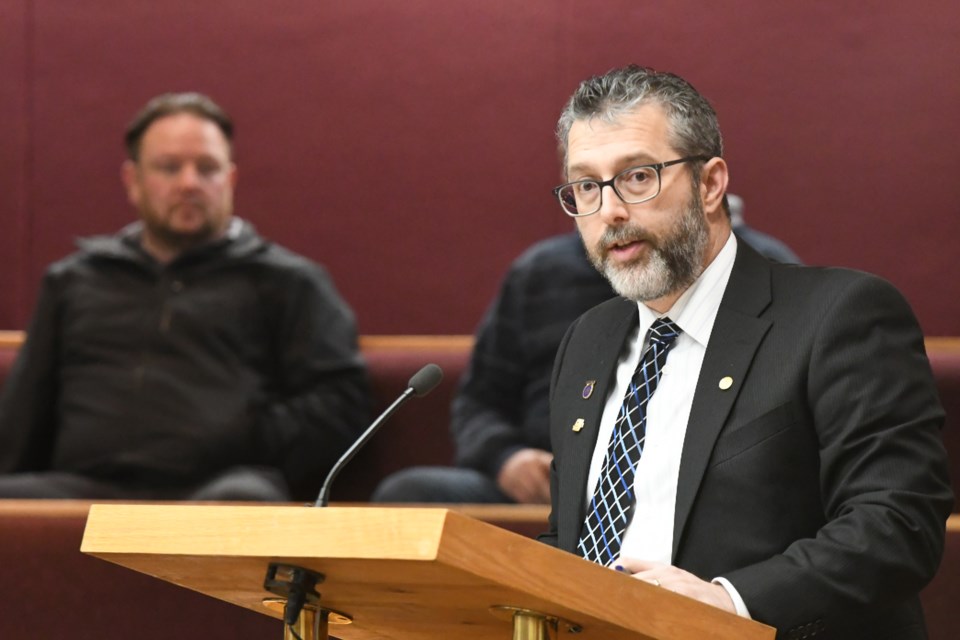The Buffalo Pound Water Treatment Corporation met most of its regulatory requirements to produce safe drinking water last year, although it will only resolve some operational issues when it completes the water treatment plant renewal project.
The corporation — which oversees the Buffalo Pound Water Treatment Plant — had a good year in 2019 and, besides meeting its regulatory requirements, also met its obligations under the membership agreement with the cities of Regina and Moose Jaw, general manager Ryan Johnson explained.
Some problems affected the corporation’s operations, such as loss of power, the quality of raw water and equipment failure. There were also some regulatory issues with the operations of the plant’s process waste lagoons, which discharged total suspended solids back into the environment.
Construction crews completed Phase 1 of the electrical capital upgrade project, which included a new electrical substation and backup generations at the main plant, Johnson told city council recently while discussing the corporation’s annual report.
“The plant renewal project will ensure the long-term viability of the treatment plant to address the ongoing challenges to treat the raw water that we have, meet current and future regulatory requirements, address our current aging infrastructure problems, meet growth in region and fulfill corporation’s mandate for generations to come,” he said, adding the project will also address challenges to treating lake water.
The plant renewal project will cost between $124 million and $224 million. The corporation has applied for federal funding and hopes that will pay for most of the work.
The corporation had a good year financially, seeing revenues from water sales of $13.3 million and expenses of $11.6 million, leaving a surplus of $1.7 million that went to the capital project reserves.
Construction on phase 2 and 3 of the electrical upgrade project commenced last year and will finish this year, Johnson said. These projects will improve electrical system reliability and efficiency and optimize raw water pumping operations.
The water treatment plant produced 35,667.73 megalitres (ML) of water last year for Moose Jaw, Regina and SaskPower, according to the annual report. Regina consumed 30,265.48 ML, Moose Jaw consumed 5,195.93 ML and SaskPower consumed 206.32 ML. The total amount of water produced was down from 37,693.76 ML two years ago.
One megalitre is equivalent to one million litres. An Olympic-sized swimming pool holds 2.5 million litres.
Council discussion
The corporation budgeted $477,700 for power utility charges, but that figure came in at $611,110, observed Coun. Brian Swanson. He wondered how that happened, while he also wondered if the electrical upgrades would help with energy efficiencies.
Regina uses most of the power for its pumps — which are less efficient — so that is why that revenue figure is higher, said Johnson. Moose Jaw’s power use has been similar for the past few years, while the municipality plans to replace its pumps at the treatment plant.
There will be some electrical efficiencies once upgrades occur at the main plant and electrical substation, he added.
In 2018 the corporation had $1.9 million under its accounts payable and accrued liabilities line, compared to $11.3 million last year, said Swanson. He wondered if that was due to the payment of the construction project. Johnson replied it was, pointing out the corporation received invoices in January 2019 for work completed the year before.
The annual report indicated researchers found DEET while analyzing water samples, at 15 parts per trillion, which was likely from people who wore bug spray and then swam in Diefenbaker Lake, Johnson said. When the corporation analyzes samples, it can pick up small traces of chemicals since parts per trillion is a more accurate process.
Council then voted to receive and file the report.
The next regular council meeting is June 29.

.png;w=120;h=80;mode=crop)


